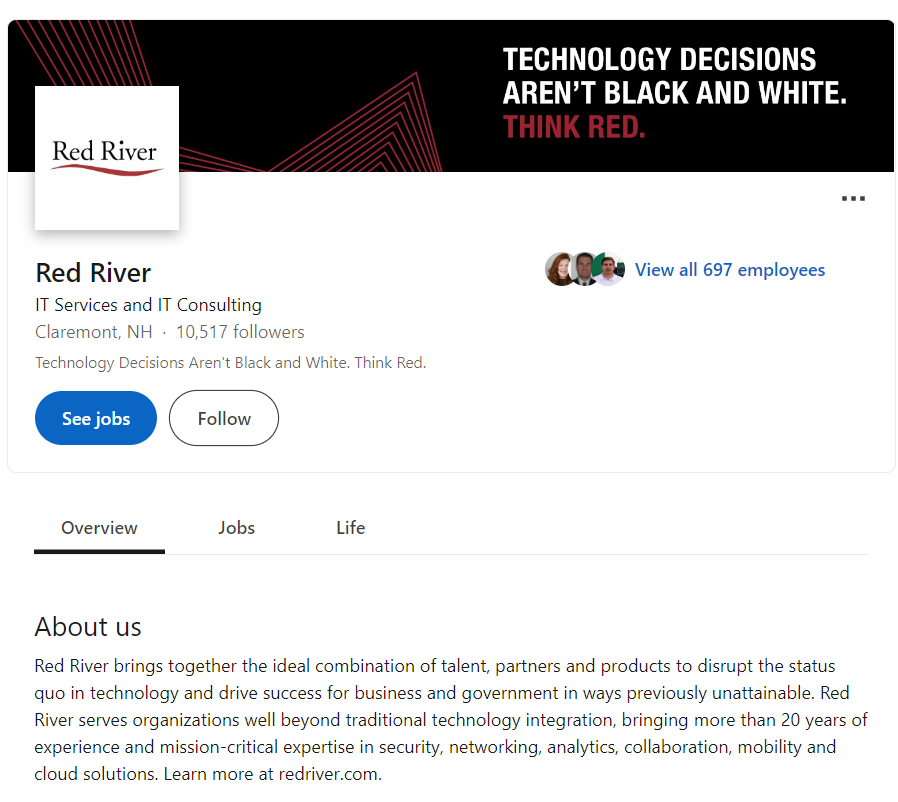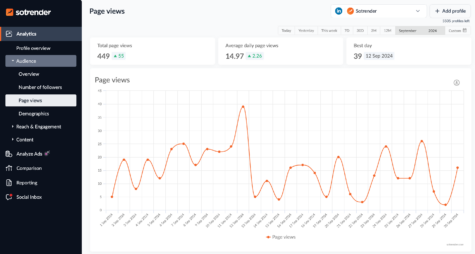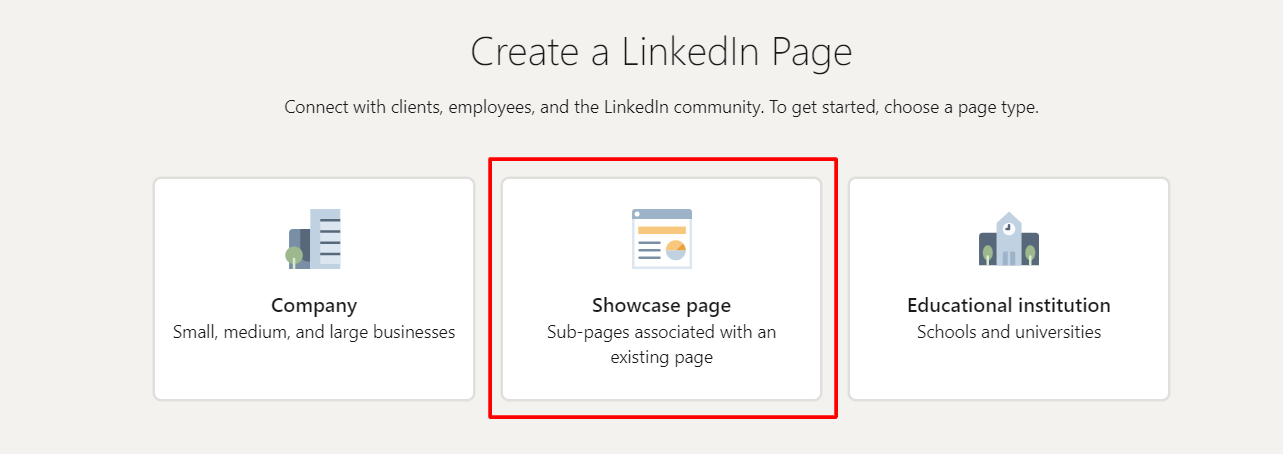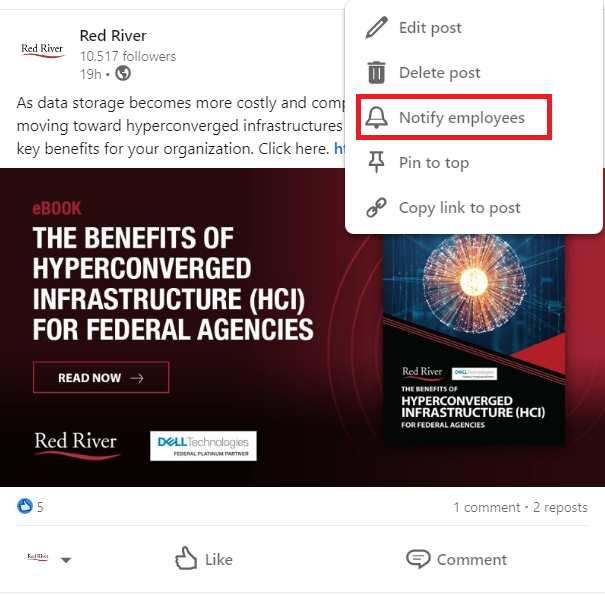LinkedIn is a great place for B2B businesses and marketers to find potential customers, generate qualified leads, and build their brands. It is one of the fastest-growing networks around and is predominantly used by professionals.
After going through numerous transformations over the years, LinkedIn has managed to grow massively in terms of users and business-friendly features, helping marketers generate better ROI on marketing investments ever since Microsoft acquired it. It is considered one of the best platforms for B2B marketing – an ideal platform for reaching your target audience and generating leads.
Even though several companies are using LinkedIn as a marketing tool, many B2B marketers are not using it to its full potential. The problem is many organizations use LinkedIn only for brand awareness and rely on other platforms to capture leads. However, they often fail to optimize their LinkedIn business profile for lead generation. Optimizing your LinkedIn company page for branding and visibility is crucial, as it showcases appealing content and utilizes keywords to attract potential clients and employees. Additionally, optimizing your LinkedIn business page for search visibility and actively promoting it can significantly increase its traffic and effectiveness.
B2B marketers should recognize that there are many advanced ways of using LinkedIn as a powerful B2B marketing tool that can open up the floodgates of leads, thereby helping them strengthen their relationships with their prospects.
LinkedIn has the potential to provide a wealth of opportunities when used correctly.
9 Marketing Strategies for LinkedIn B2B Lead Generation
There are various LinkedIn strategies for B2B that can be implemented for B2B lead generation. Here are some important tactics that you need to implement and integrate with your LinkedIn marketing strategies to generate quality leads for your business.
However, executing these strategies effectively can be challenging, especially if you’re not well-versed in B2B internet marketing. To ensure the best results, it’s often best to partner with a reputable B2B internet marketing agency that can help you develop and execute a comprehensive LinkedIn strategy tailored to your business needs and goals. With the right approach, you can leverage LinkedIn to drive qualified leads, build brand awareness, and ultimately grow your business.
B2B LinkedIn Strategy #1 – Define Your Target Audience
Defining your audience is a crucial step in creating a successful LinkedIn marketing strategy. Your target audience is the group of people who are most likely to be interested in your products or services. To define your audience, you need to consider factors such as demographics, job title, industry, and pain points.
Start by identifying your ideal customer profile (ICP) and buyer persona. This involves understanding the specific characteristics of your best customers, including their job roles, industries, and challenges they face, whether they’re seeking fractional COO services or other business solutions. Research your competitors and their target audience to gain insights into what works in your industry. Analyzing your existing customer base can also help you identify common characteristics and preferences.
LinkedIn’s built-in analytics tools are invaluable for gaining insights into your audience. Use these tools to track engagement metrics, understand who is interacting with your content, and refine your target audience based on this data.
By defining your audience, you can create content that resonates with them, increase engagement, and ultimately drive conversions. A well-defined audience is the foundation of any effective LinkedIn marketing strategy.
LinkedIn Strategy #2 – Design a Captivating LinkedIn Company Page

LinkedIn Company Page example
A company page allows you to brand your company and by designing an attractive one you create a good first impression of your business. When prospective clients browse your LinkedIn company page, they should be able to find all the crucial information about your business and how it can help them.
Cover image and profile picture are one of the first things that people notice when they arrive on your company page. So, you should get creative with the pictures and make them effective, while also ensuring that they send a clear signal about what you do.
You should write a concise summary line that describes what your business does. Make sure to include relevant keywords to make your company page more discoverable. The “About Us” section is a space where you can craft a captivating description of your company’s purpose and why people should choose you instead of your competitors.
You can understand how attractive your profile is to LinkedIn users by checking your LinkedIn analytics.
Head to metrics like unique impressions or unique visitors to analyze how many users actually visit your Company Page and how many new followers you get.
Sotrender is one of the tools that you can use for monitoring your profile and LinkedIn content performance.

In Sotrender, you can monitor unique visitors with a daily chart.
LinkedIn Strategy #3 – Develop a Content Strategy
Developing a content strategy is crucial for a successful LinkedIn marketing effort. A well-thought-out content strategy outlines the type of content to be created, the frequency of publication, and the audience. It also aligns with the company’s goals and objectives, while keeping an eye on industry trends and competitor activity.
Start by identifying your target audience and understanding their needs. What type of content do they engage with? What are their pain points, and how can your content address them? Use this information to create a content calendar that details the type of content to be published, the frequency of publication, and the specific audience segments you aim to reach.
Consider incorporating a variety of content types to keep your audience engaged:
- Industry news and updates: Share the latest trends and developments in your industry to position your company as a thought leader.
- Thought leadership articles: Publish in-depth articles that showcase your expertise and provide valuable insights.
- Case studies and success stories: Highlight your successes and demonstrate the value of your products or services through real-world examples.
- Infographics and visual content: Use visuals to simplify complex information and make your content more engaging.
- Videos and podcasts: Leverage multimedia content to reach a broader audience and cater to different content consumption preferences.
Additionally, consider repurposing content from other social media channels to save time and increase efficiency. By developing a robust content strategy, you can ensure that your LinkedIn marketing efforts are consistent, targeted, and effective in engaging your audience and driving results.
LinkedIn Strategy #4 – Build Personalized Content by Creating a Showcase Page

Creating a Showcase Page on LinkedIn
It is important to share valuable, industry-specific content to differentiate yourself from similar businesses and help you make more sales. A big advantage of using LinkedIn is that there are already many decision-makers on this platform, which gives you a perfect opportunity to reach them through your unique ideas.
You can feature your company’s specific products and market to a specific buyer persona through Showcase Pages. Building personalized content for multiple buyer personas is a great way to reach out to prospects in a more targeted way.
You can create a Showcase Page for your top-selling item. For example, if you are in the business of supplying branded sports shoes to sports organizations and your top-selling product is soccer cleats, you would want to feature a page about all of the different styles of soccer cleats you offer to your clients.
LinkedIn Strategy #5 – Create a Group on a Topic Related to Your Brand
To keep your content focused on your brand-relevant subject, consider creating a group on a particular topic to start conversations with prospects sharing similar interests. Usually, customers are more interested in focusing on a common topic or industry issue than in talking about your products. Therefore, creating a group on a topic related to your brand is important to position yourself as an expert within your niche.
It is not easy to narrow down your products or services to a specific topic; however, you can do so by determining your goals – whether it’s brand awareness or lead generation. You should also know who your target audience is and what their pain points are, and what specific benefit you can give your audience that other groups can’t. Most importantly, you should be able to identify the common topics you can relate to your brand with.
Once you have created your LinkedIn group, you can start posting content to attract people interested in your topic. Remember, the group should focus less on directly promoting your brand. It should be focused on a topic that has a natural connection to your brand, making people want to join the group out of interest in the topic. Over time, they will develop an interest in your brand as well and build a natural connection to it which is more valuable.
For instance, if you are selling computers to organizations that provide computer coaching classes to children from underprivileged backgrounds, you could create a LinkedIn group “Empowering Underprivileged Children”. You can expect a good response from your created group, as helping young people is key to improving our society, and can put forth your organization as a thought leader in this regard. However, as we mentioned before, your group should focus on knowledge sharing and not just on promoting your brand or offering, as people are smart enough to understand that and will lose interest in your business.
Sending personalized emails to your group members once your group expands is a great way to convert them into leads. A personalized email has the power to deliver your business information in a memorable way. Once you have established a connection with your prospects, you can send them a follow-up email to convince them to take action you want, like collaborating on a project.
LinkedIn Strategy #6 – Showcase Your Company Expertise in an Interactive Manner
A simple yet effective way to build your presence on LinkedIn is by encouraging your colleagues to share their expertise on the platform. They can do so by writing blog posts and articles. They can also join LinkedIn groups where they can exchange ideas with other like-minded professionals. However, you need to go out of your way to encourage your employees to share their knowledge on LinkedIn.
You can encourage your employees to write articles on topics related to your industry or company and you need to make sure that you give them enough time and resources to promote their articles on various social media platforms.
It is important to make them feel rewarded by not just giving them positive feedback – telling them how much their contributions mean to you and your company – but with other rewards as well, given that blogging may not be in their job descriptions. They may feel empowered, too, if you give them access to LinkedIn Ads or other paid tools, provided that they have decent knowledge about LinkedIn ads or the paid tool to which you are offering them access. This will instill in them a sense of responsibility.
LinkedIn Strategy #7 – Encourage Your Employees to be Involved

Employee Notifications feature on LinkedIn
It is important to encourage your employees to be actively involved in social media initiatives because LinkedIn labels your post as quality content only if it receives good engagement in the next 30-60 minutes of sharing it. Therefore, active employee engagement is crucial for maximizing LinkedIn marketing efforts and pushing your content to a wider audience.
LinkedIn recently rolled out an incredible feature that allows LinkedIn Page Admins to let their employees know when they’ve posted an important post on their organization’s page. This “Employee Notifications” feature alerts your employees immediately and they can engage in due time.
You should also encourage your employees to talk about your company’s accomplishments, technology, services, and customer success stories. When employees speak about their company’s achievements and share details related to them, it creates a much bigger impact when the same is shared by the company itself. Therefore, engaging employees on LinkedIn is not just crucial for marketing and branding but for the overall growth of the business as well.
Instead of looking for external influencers, you should encourage your employees to be active on LinkedIn because you cannot have a better influencer than someone from your team who strongly believes in the product or service and its impact. Remember, it’s the employees of a company that brings a LinkedIn B2B marketing strategy to life.
LinkedIn Strategy #8 – Bring Value to Your Target Audience by Publishing LinkedIn Articles
Sometimes, LinkedIn posts and status updates may not be an effective way to share certain important information such as customer success stories. Writing and publishing LinkedIn articles can help you raise your visibility on the platform as they are a key component of content marketing for B2B brands. This approach gives you a better opportunity to showcase your expertise and knowledge.
Using LinkedIn articles to publish your case studies, market research data, and so on is an effective way to bring value to your audience. LinkedIn articles can be search engine friendly and rank on Google search results if you do your keyword research beforehand. A LinkedIn article with well-researched keywords will have a wider reach and not just remain limited to LinkedIn users.
LinkedIn Strategy #9 – Retarget Your Website’s Visitors on LinkedIn
Website visitors who leave the site without sharing their email is something that shouldn’t be ignored. LinkedIn’s website retargeting feature allows you to reach out to these former visitors with ad content on LinkedIn. Promoting retargeting efforts across other social media channels can further enhance visibility and engagement.
If a user visited a specific page on your website and left without converting, LinkedIn allows you to retarget them with paid campaigns to bring them back to your site. However, you need to make sure that your remarketing content is related to the visitors’ past interactions on your site, i.e., you should leverage LinkedIn website retargeting ads to reach those visitors again on LinkedIn with relevant communication by trying to understand what they were looking for previously.
It is important to have a LinkedIn Insight Tag installed on your website for tracking your website’s visitors and their interactions on your site.
Final Thoughts
There may be several marketing strategies for Linked B2B lead generation; however, the quality of content is key since brands are not defined by the number of followers on this platform but based on the information you share.
While implementing the LinkedIn strategies mentioned in this post to grow your business, you should ensure that your customers are getting quality information about your products or services at every stage of the B2B marketing funnel.
Remember, whether you are looking to engage with your prospective customers or simply organize your personal connections, integrating social media channels with your LinkedIn marketing efforts can enhance overall strategy effectiveness.







